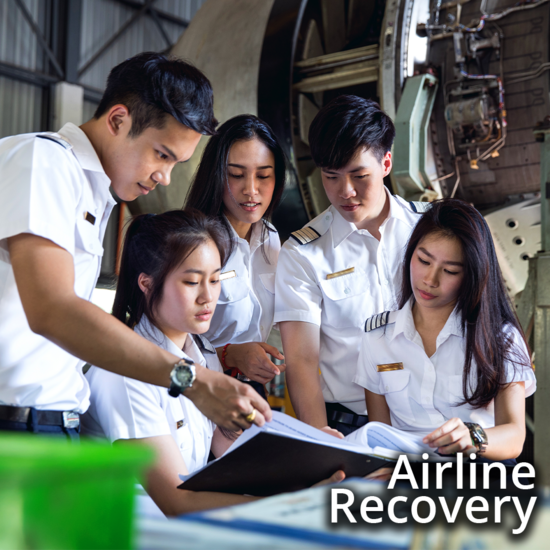Airline Recovery
- Publish Date: Posted about 3 years ago
- Author:by Resource Group
Predicting when the aviation industry will operate at full capacity again is hard to know, and reports state that this won’t be before 2024.
However, the recent surge in the number of holiday bookings has certainly taken the industry by storm.
"The number of air passengers carried from January to April 2022 increased by 65% compared to the same period in 2021, while aircraft flight departures increased by 30%." - ICAO Uniting Aviation.
Leisure trips will be the main factor that assists with the recovery of airlines, and by the end of 2022, it is forecast that North America, Europe, the Middle East, Southwest Asia, and the Latin America/Caribbean region will be operating at total seat capacity levels similar to those we saw pre-pandemic.
Pilot Shortage
The aviation industry is enduring a shortage of pilots as the global in-service fleet has already skyrocketed to 76% of pre-covid levels. Unfortunately, the attraction to becoming a pilot has decreased due to the uncertainty of a stable career path.
Several furloughed pilots have returned to their job, but many have found employment elsewhere in different industries, and others took early retirement packages.
We spoke to a number of pilots to find out why they believe airlines are struggling to fulfill Pilot/First Officer roles. This is the feedback we received:
Pilots are looking for more stability/permanent work rather than contract work, e.g. 6 months over the summer period.
Many prefer being closer to home and don't want to be away from home for long periods e.g. 3 months at a time.
Some no longer want to work unsocial hours.
Others have found alternative work that is still within the aviation industry, for example as Flight Instructors or Ground Operations.
The pilot shortage is adding to the chaos at airports alongside rising fuel prices and too many people travelling across the summer period of 2022.
How are airlines trying to find more pilots?
Many airlines are trying to think of different ways to recruit new pilots, these include:
Higher Salaries - some but not all airlines are increasing pay by 50%. However, this is only temporary.
Recruiting retired pilots - several pilots retired at 50 due to the pandemic but are still physically fit and healthy to operate aircraft.
Staff up with Trainers - having past pilots who may no longer be able to fly, train other staff. This will prevent current pilots being taken away from operating an aircraft to deliver training.
Pilot Training
ICAO reports that by 2030, commercially operated aircraft will increase from 61,833 to 151,565.
To meet these targets, it is suggested that the number of professionals who will need training by 2030 is as follows:
Pilots – 160,000
Maintenance Personnel – 360,000
Air traffic controllers – 40, 000
For more information visit: https://www.icao.int/Newsroom/Pages/icao-study-reveals-strong-demand-for-qualified-aviation-personnel-up-to-2030.aspx
Pre-pandemic, the job market was very competitive with many applicants for pilot roles. This meant airlines were able to be picky when it came to applicant experience and requirements. However, due to the current pilot shortage, low-cost airlines are now accepting qualified candidates with less flight hours and experience.
For example - Ryanair, Easyjet, and Wizz Air are recruiting both newly qualified and highly experienced/qualified pilots. Jet2 is offering candidates the chance to become a pilot apprentice and work in a non-flying role for several months. The pilot apprentices will then be required to change to a flight deck role.
We understand that the cost of pilot training is expensive however, once fully trained, you could earn a considerably high salary.
We regularly recruit for pilot positions. If you would like to view the current roles we have, visit here.

CONNECT WITH US